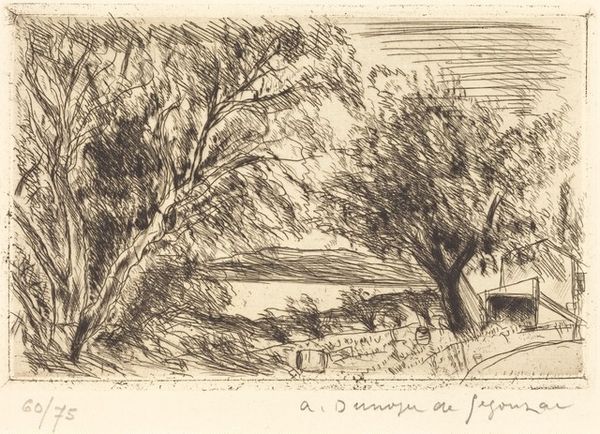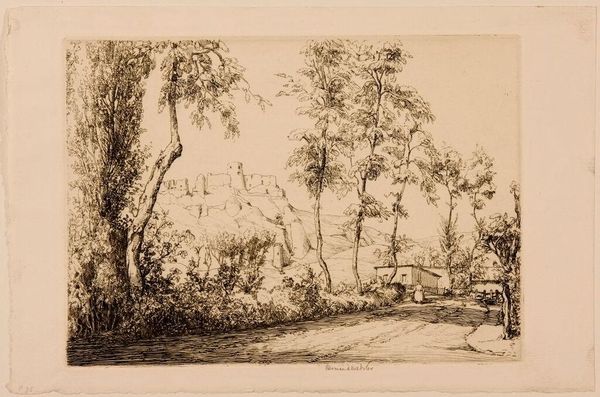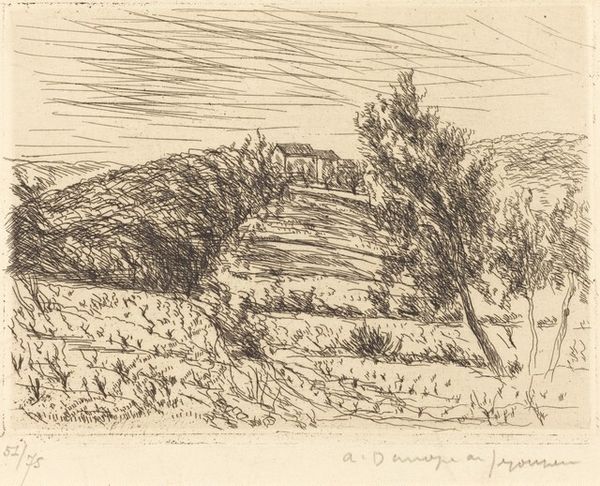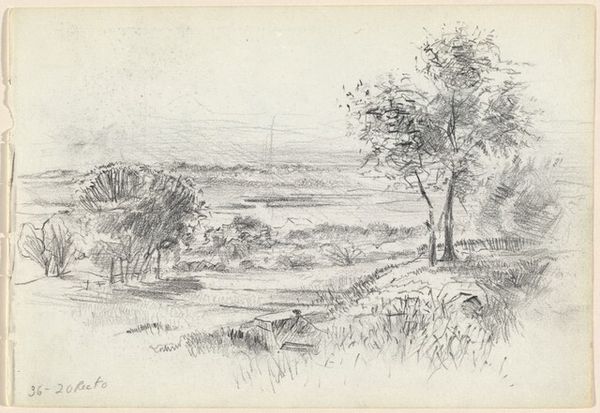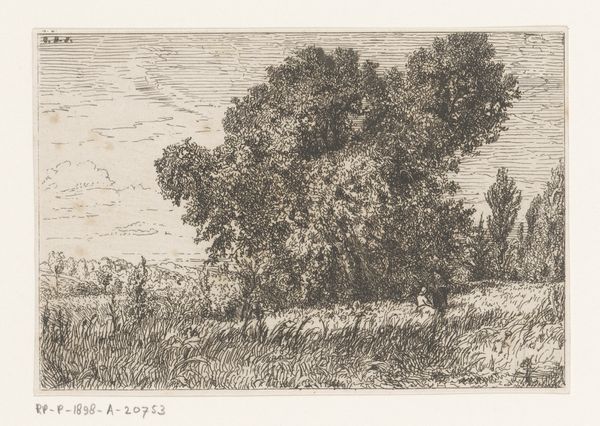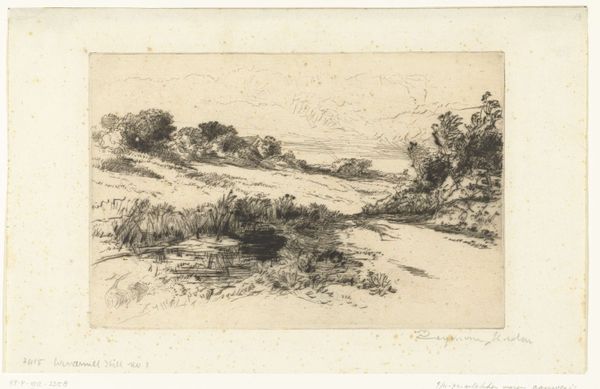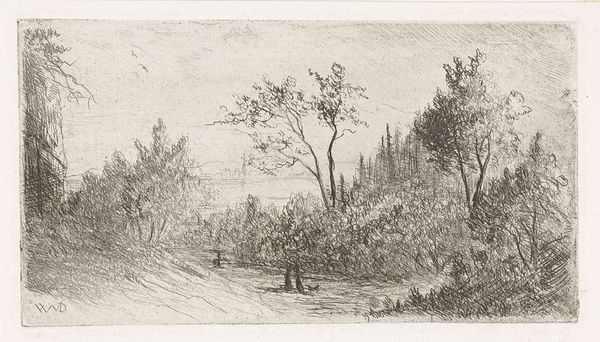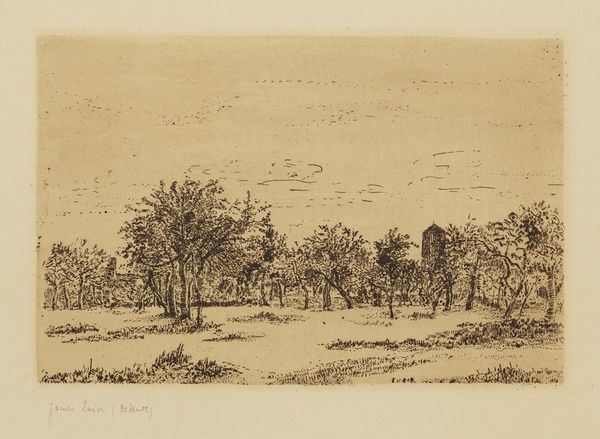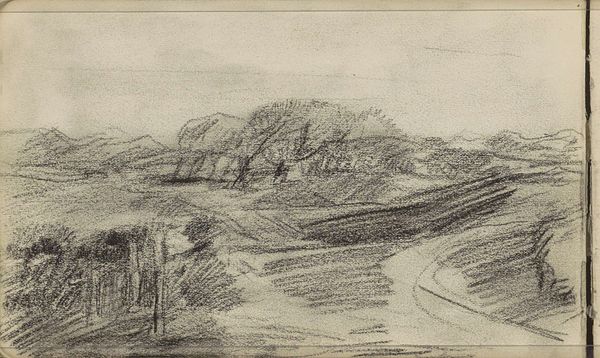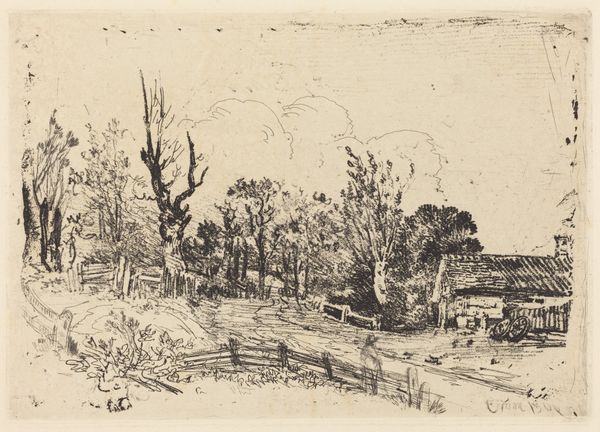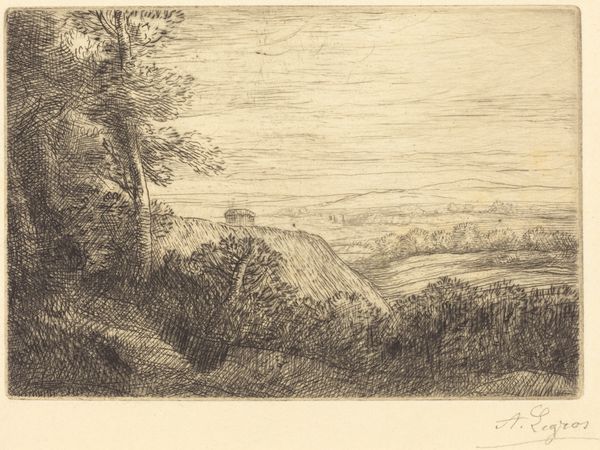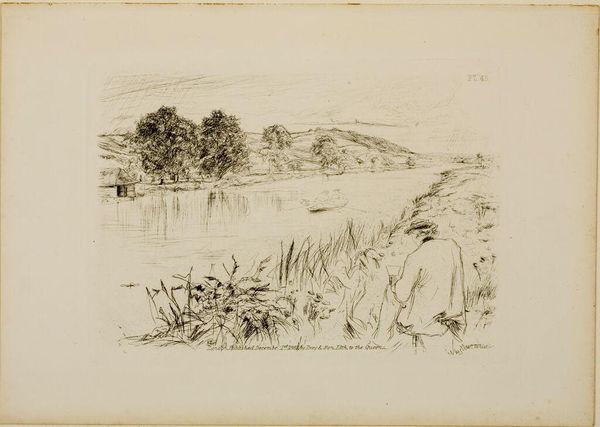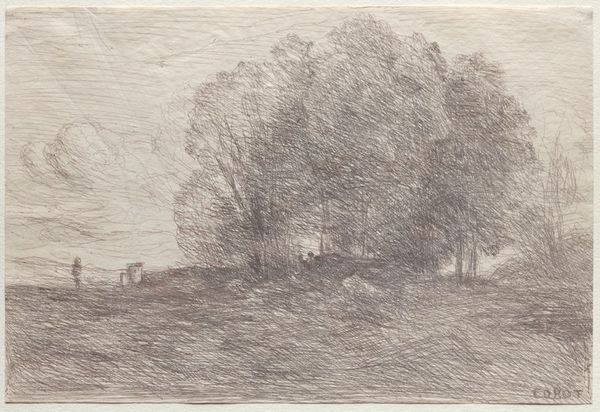
print, etching
# print
#
etching
#
landscape
#
etching
#
modernism
Copyright: National Gallery of Art: CC0 1.0
Curator: Today, we're looking at "The Church at Villiers," an etching by André Dunoyer de Segonzac, created in 1923. The delicate lines portray a quiet, rural scene. What are your first impressions? Editor: It's rather melancholic, isn't it? A quiet desperation hangs in the air, especially in those sweeping strokes across the sky. It speaks of a post-war stillness, maybe the lingering anxiety after the perceived "war to end all wars." Curator: It's interesting that you pick up on that. Segonzac, though known for landscapes, was deeply affected by his experiences as a soldier in the First World War. He worked primarily as a printmaker during this period. It’s as if the labor and act of making the etching is almost meditative for the artist. Editor: Exactly. Think about the etcher’s hand guiding that needle, physically manifesting memory onto the copper plate. How might the labor of etching – the deliberate and repetitive act of mark-making—mirror the painstaking process of social and personal reconstruction? The steeple isn’t only a house of worship, but possibly represents a symbol of communal resilience after upheaval. Curator: And considering etching is an indirect process, where the plate itself is subject to chemical alteration by acid, there's a layering of processes both deliberate and subject to chance. The final image isn't directly rendered. Editor: Which almost seems appropriate given the time! You consider it a sort of removed memory then? Perhaps the process allows for an emotional detachment—the acidic process working like an alchemic metaphor for a processing of trauma? Curator: Precisely! Also, remember, prints were much more accessible than original paintings; this image could reach a wider audience. Its materiality suggests that this scene might have aimed to evoke not just contemplation, but communal solidarity and remembrance. Editor: Thank you, that gives us much to consider! Curator: Indeed. An art historical lens combined with critical thinking certainly allows for enriched meaning!
Comments
No comments
Be the first to comment and join the conversation on the ultimate creative platform.
